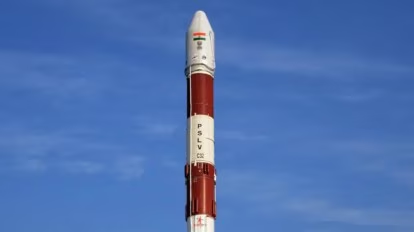India’s space sector is stepping into a new era with the upcoming launch of the first privately made Polar Satellite Launch Vehicle (PSLV) by the end of 2024. This landmark event will signify the growing role of the private sector in India’s space exploration efforts, with Hindustan Aeronautics Limited (HAL) and Larsen & Toubro (L&T) leading the charge. This project marks a major shift in how space technology is developed in India, underlining the country’s commitment to fostering private participation.
The PSLV-XL N1 rocket, a private version of ISRO’s renowned workhorse, is a testament to India’s innovative space industry. The launch of this rocket will signal a significant boost for India’s space capabilities and an opportunity for private companies to contribute to space missions in a meaningful way.
Private Sector Milestone: The Rise of India’s Industry in Space
The contract for building the private version of the PSLV was signed in 2022 at the Bengaluru Space Expo between HAL, L&T, and NewSpace India Limited (NSIL), the state-run entity in charge of commercializing ISRO’s technologies. Since then, considerable progress has been made, and the first privately built rocket is expected to take flight by the end of this year.
D Radhakrishnan, chairman and managing director of NSIL, confirmed the near completion of the project, highlighting the importance of this development. “We are looking at launching the first fully Indian industry-manufactured PSLV possibly by the end of this year,” Radhakrishnan said. The industry-led project has already realized critical components, such as the solid rocket motors, a major achievement in the PSLV’s construction.
Paving the Way for Public-Private Partnerships
While this project primarily focuses on the private manufacture of PSLV rockets, it is only the beginning of more advanced collaborations between public and private sectors in India’s space program. NSIL is exploring a new public-private partnership (PPP) model for future heavy-lift rockets like the Launch Vehicle Mk III (LVM3). This model would deepen cooperation between private companies and ISRO, allowing for more complex and large-scale space missions in the future.
By moving beyond the supplier model used in the PSLV project, this new approach will allow for more substantial contributions from private entities, which is essential as India aims to remain competitive on the global stage.
India’s Vision for Private Sector Space Innovation
The push for private participation in India’s space sector aligns with the government’s broader goal of promoting domestic industries under the “Atmanirbhar Bharat” initiative. The HAL-L&T consortium’s achievement in manufacturing the PSLV-XL N1 rocket shows that Indian private companies are ready to take on more significant roles in space missions.
Additionally, this endeavor lays the groundwork for other private space companies like Skyroot Aerospace and Agnikul Cosmos, which are developing their own space technologies. These companies, backed by ISRO’s expertise, are expected to contribute to India’s space economy in the near future.
The Complexity of PSLV Manufacturing: A Key Learning Experience
Building a rocket like the PSLV is no small feat. It involves integrating highly complex systems, from solid rocket motors to advanced guidance and control technologies. “The PSLV project has been an important stepping stone for us, giving us valuable insight into the challenges of launch vehicle realization,” Radhakrishnan said.
This experience will be vital as India plans more ambitious missions in the future, including sending manned spacecraft into orbit. The private sector’s ability to handle these complexities is a positive sign for the country’s future space endeavors.
A Bright Future for India’s Space Sector
As the first privately built PSLV is poised for launch by the end of 2024, India’s space program is set to reach new heights. This landmark event, driven by the HAL-L&T consortium, reflects the growing influence of the private sector in space exploration. With the public-private partnership model in the works for future heavy-lift rockets, India is gearing up for even more exciting missions in the years ahead.


Leave a Reply